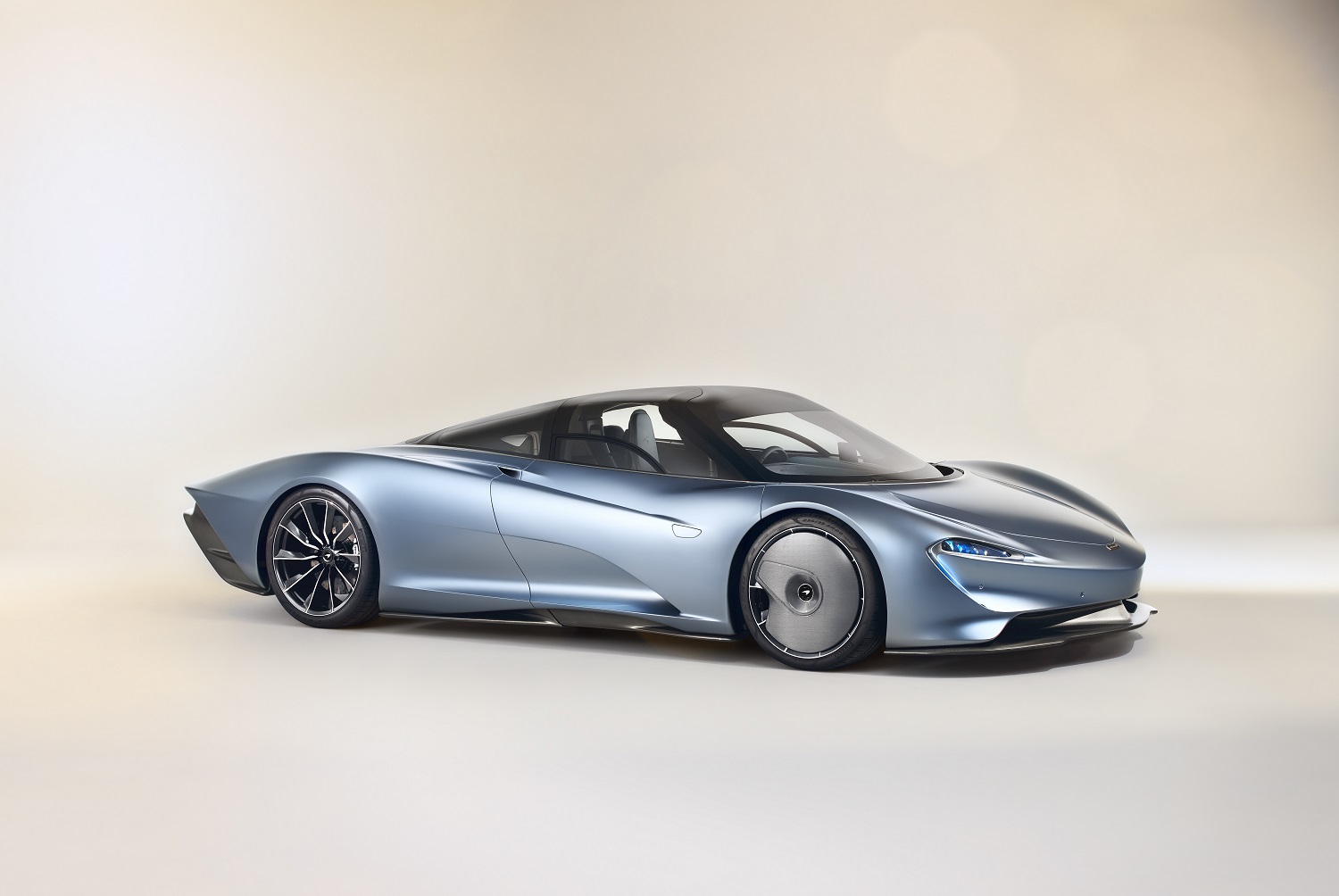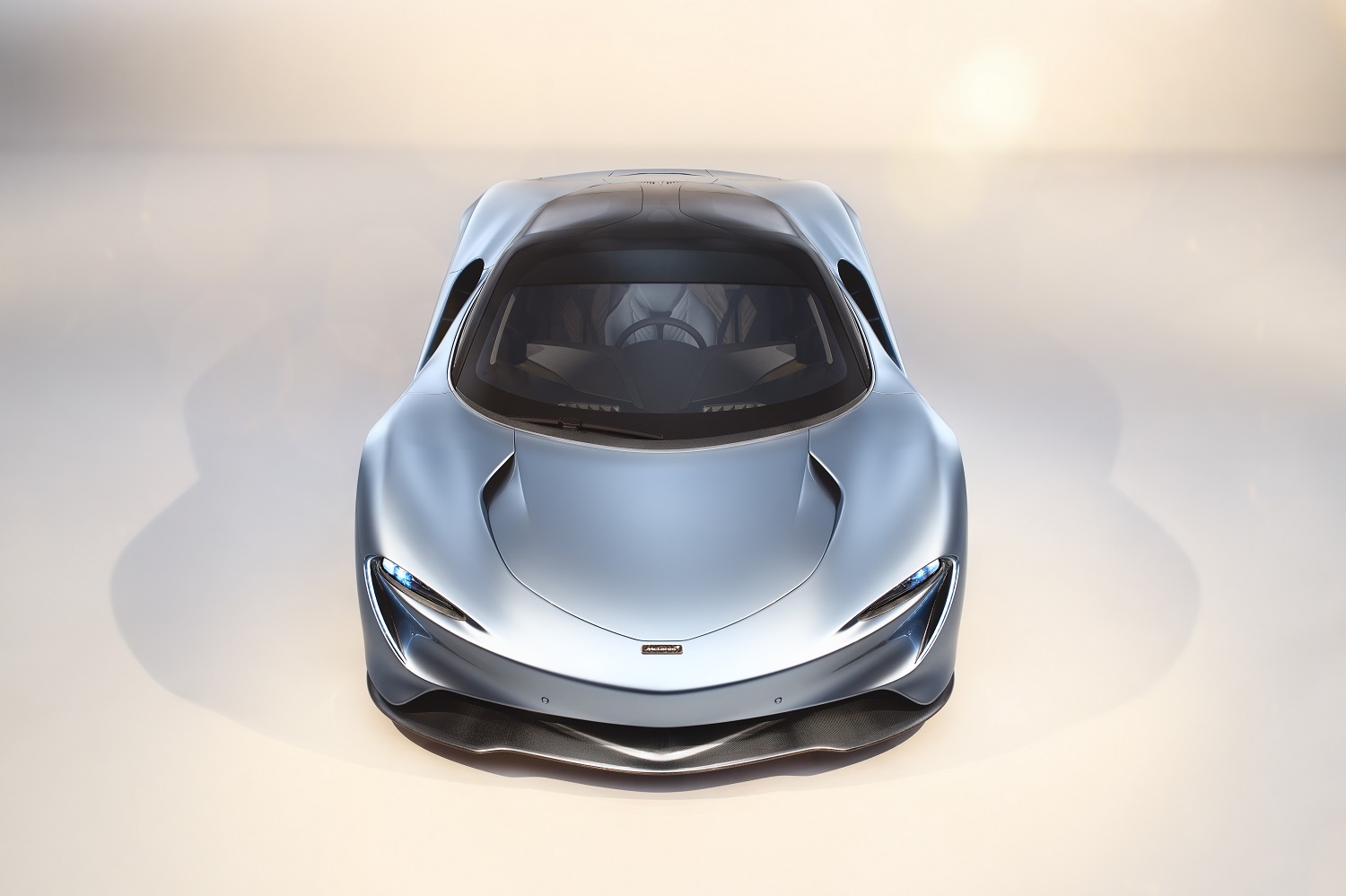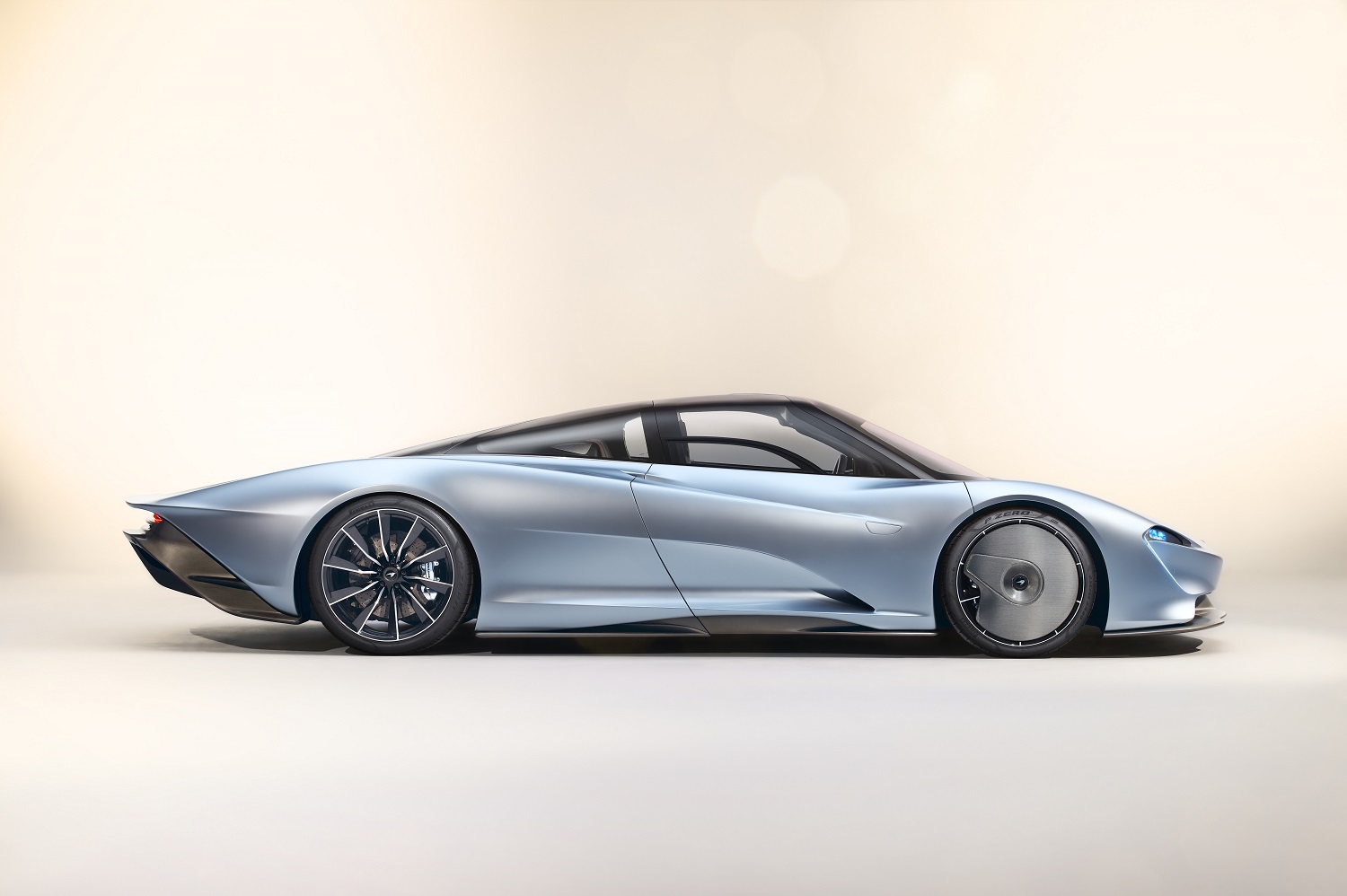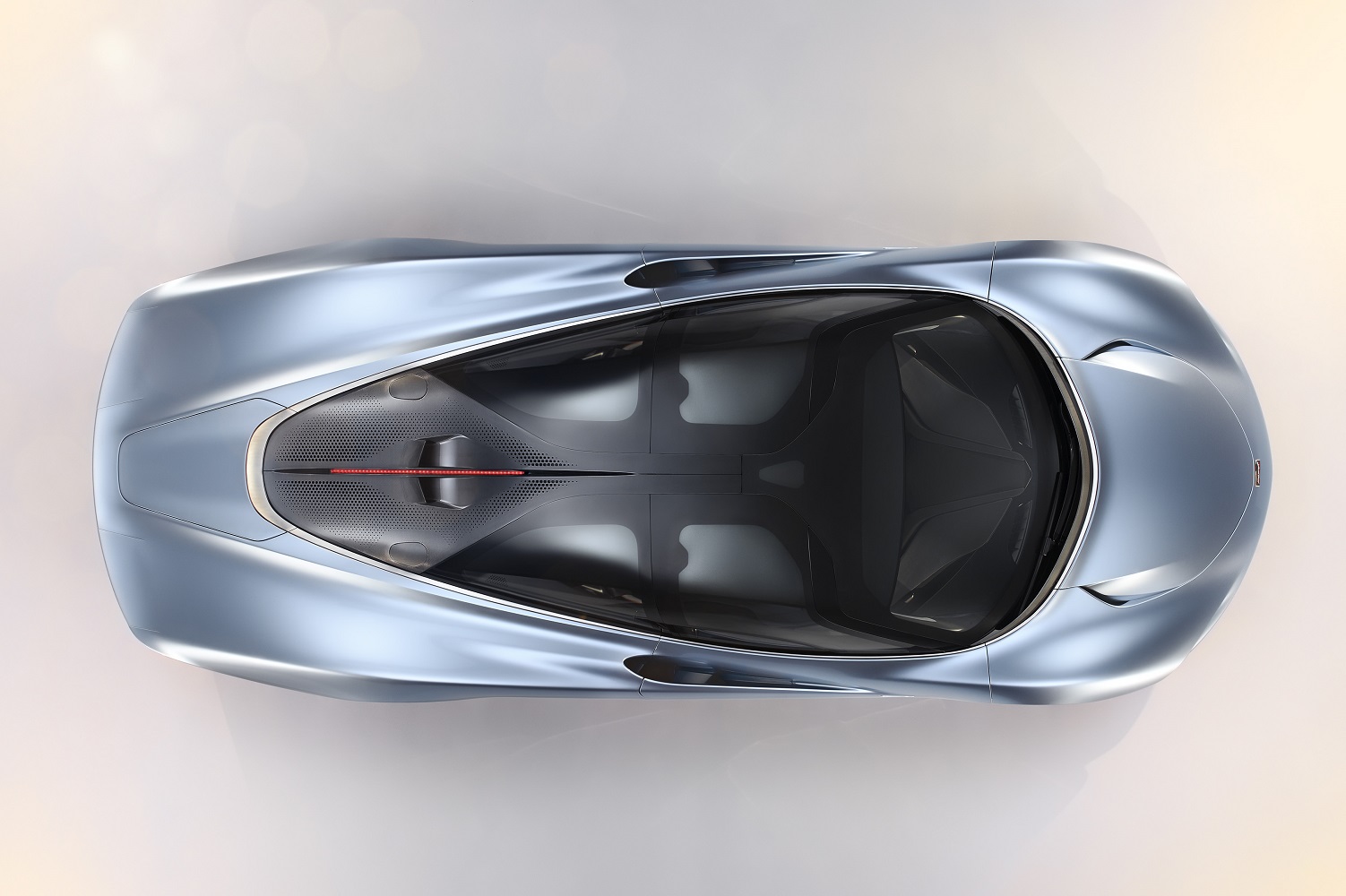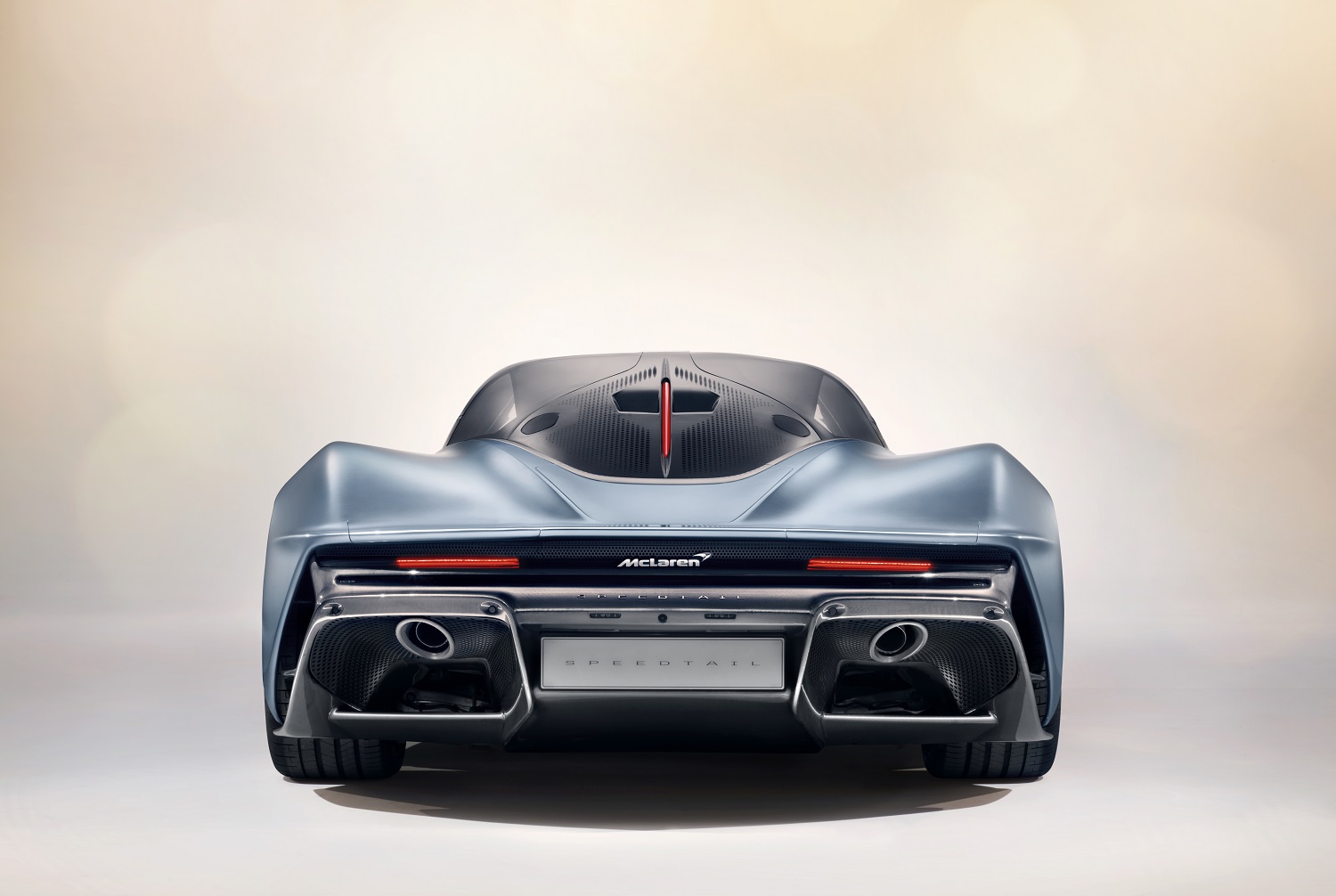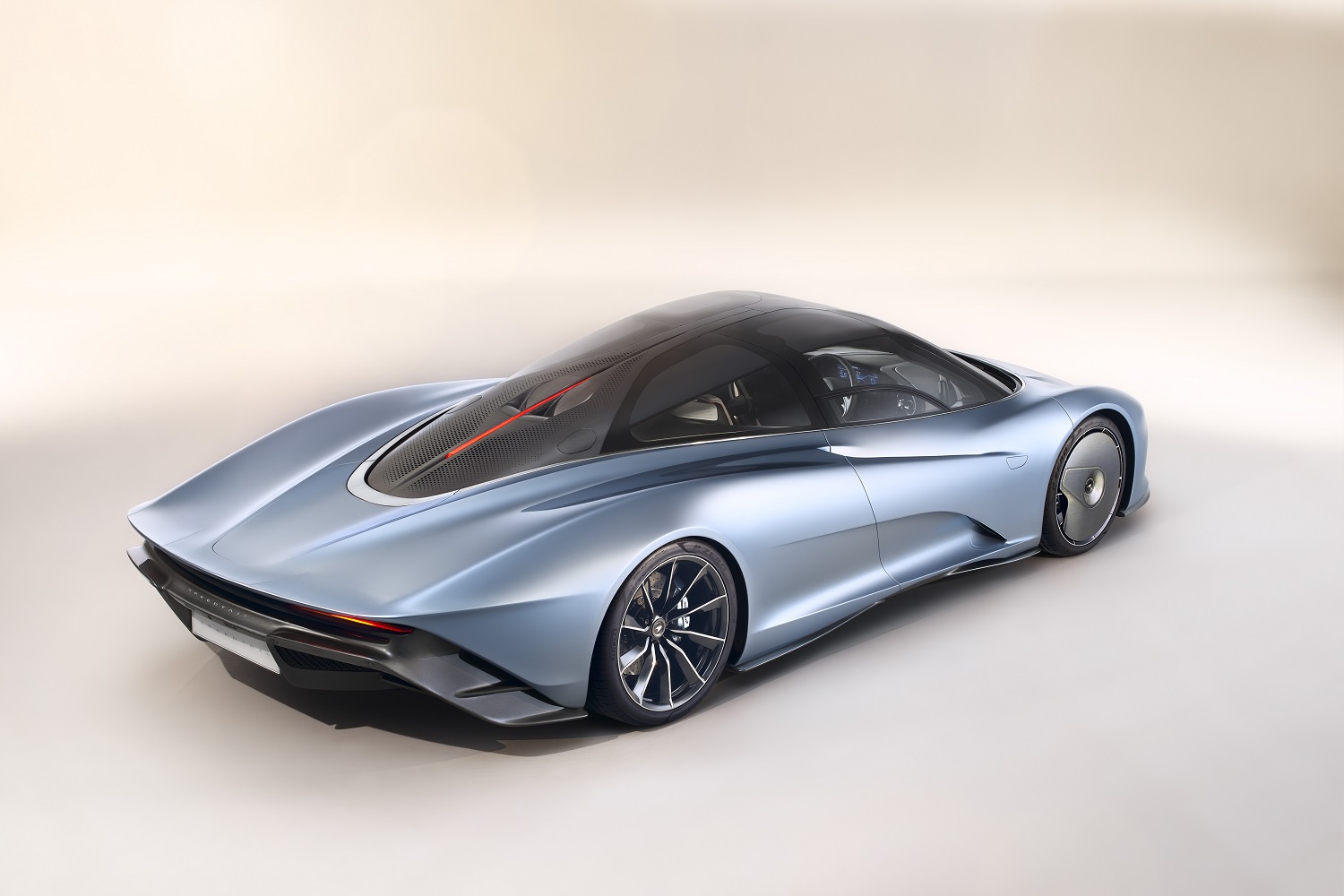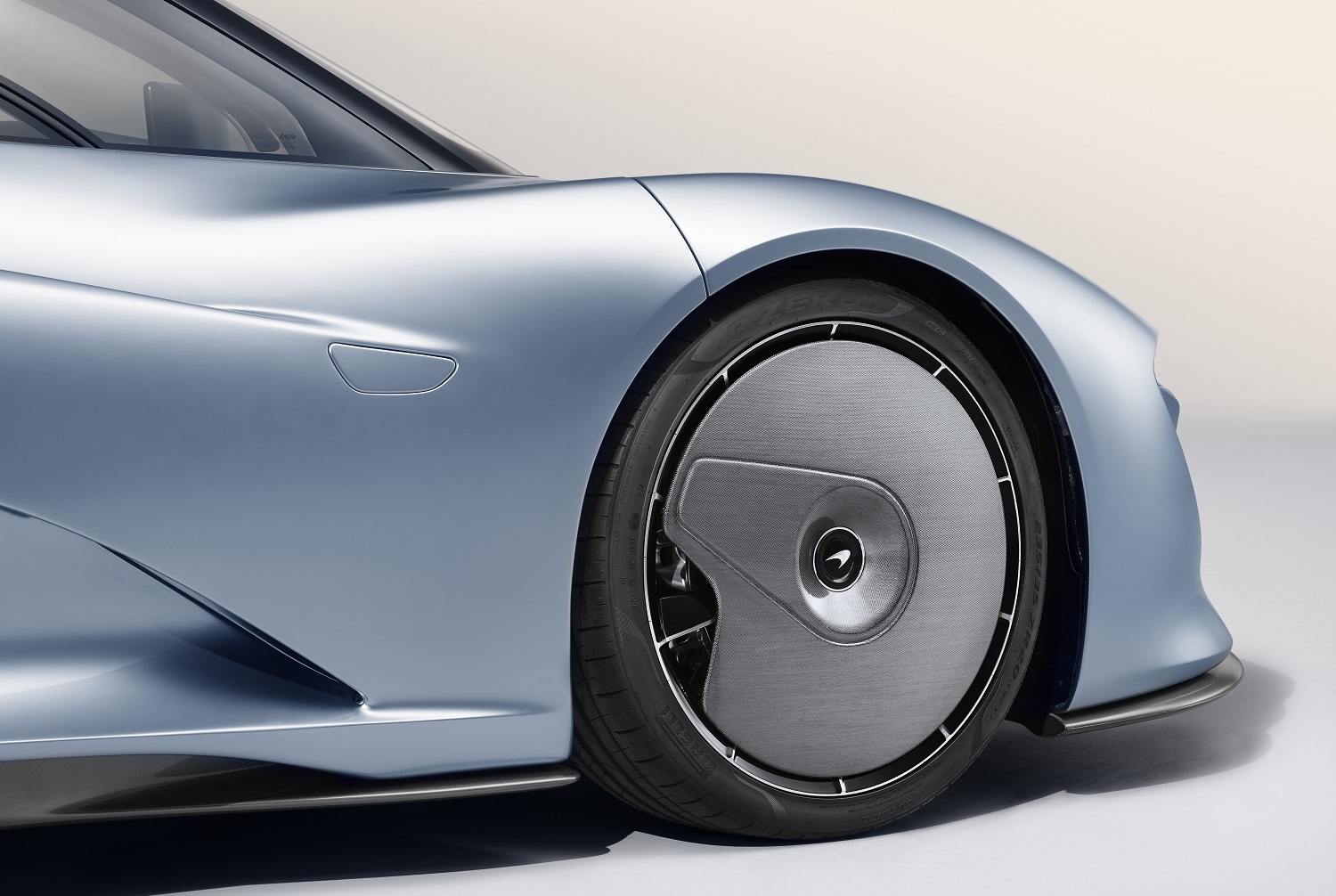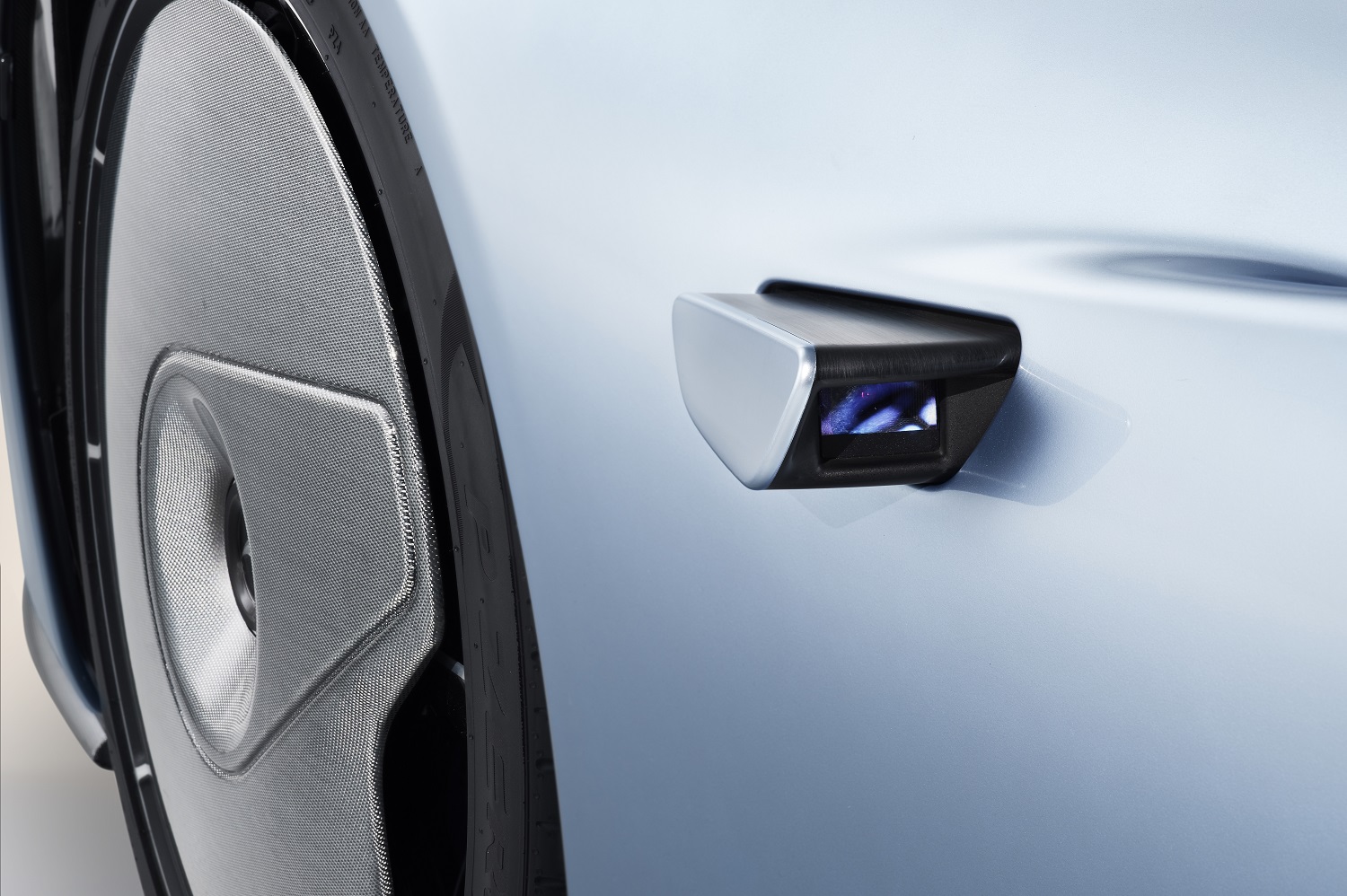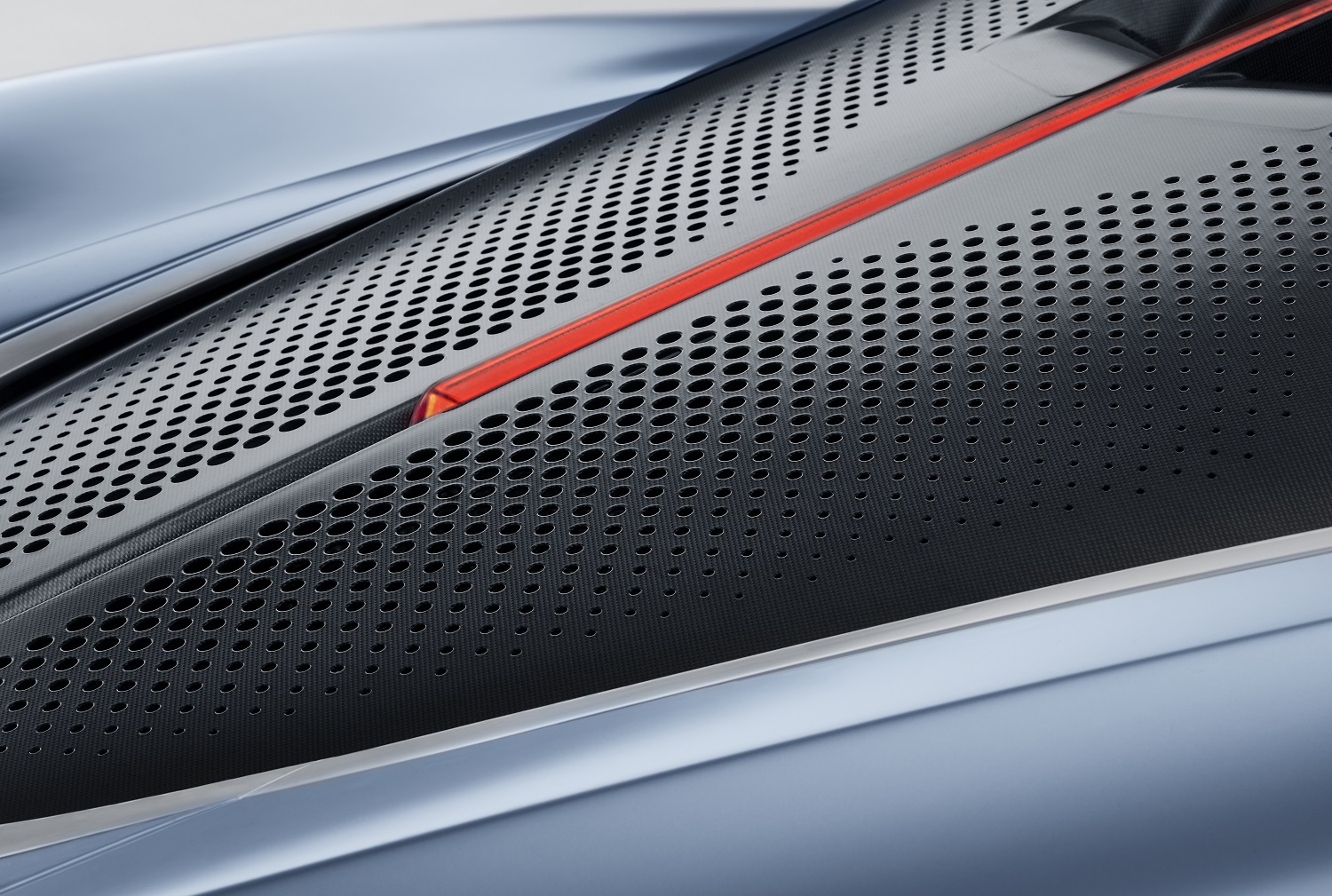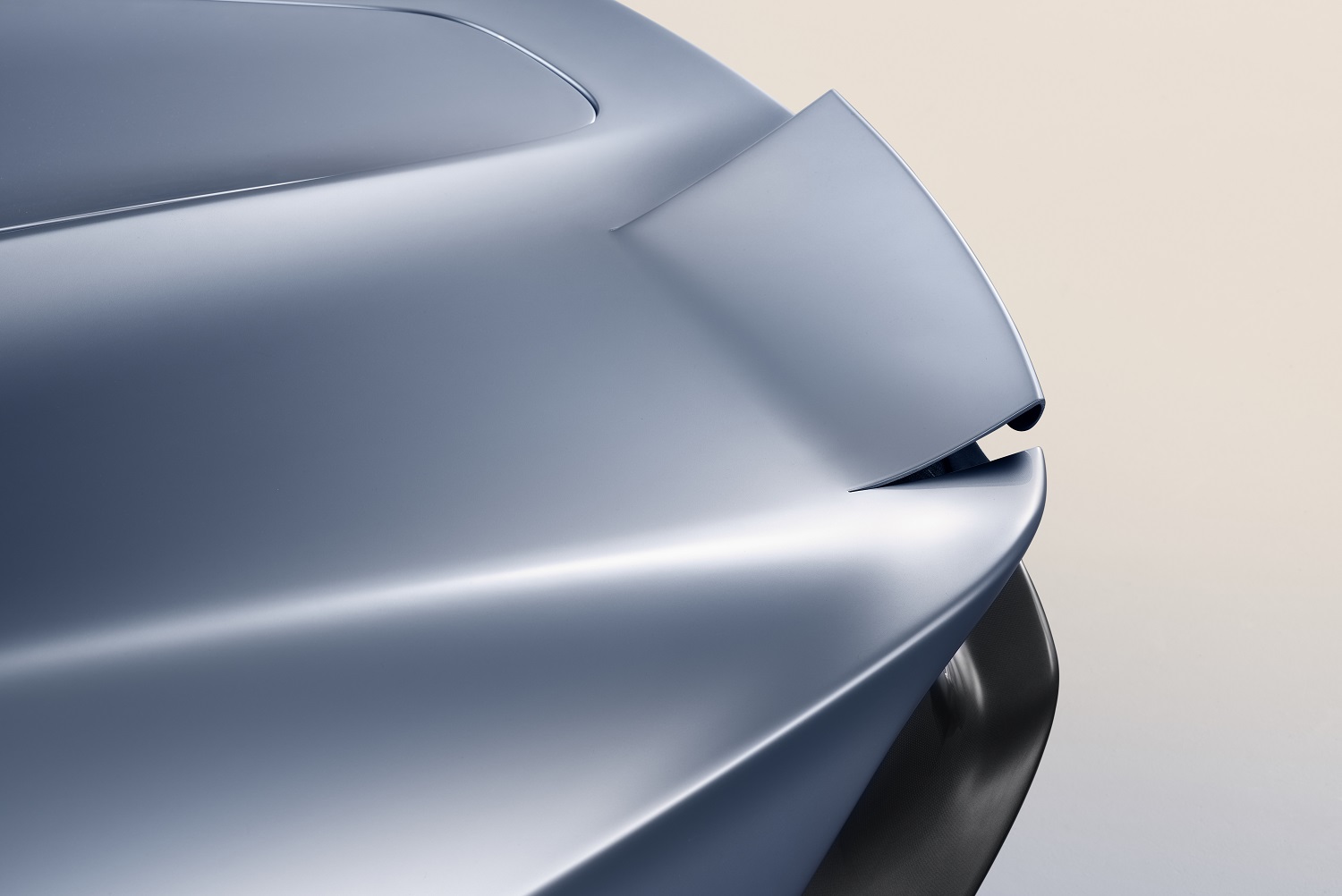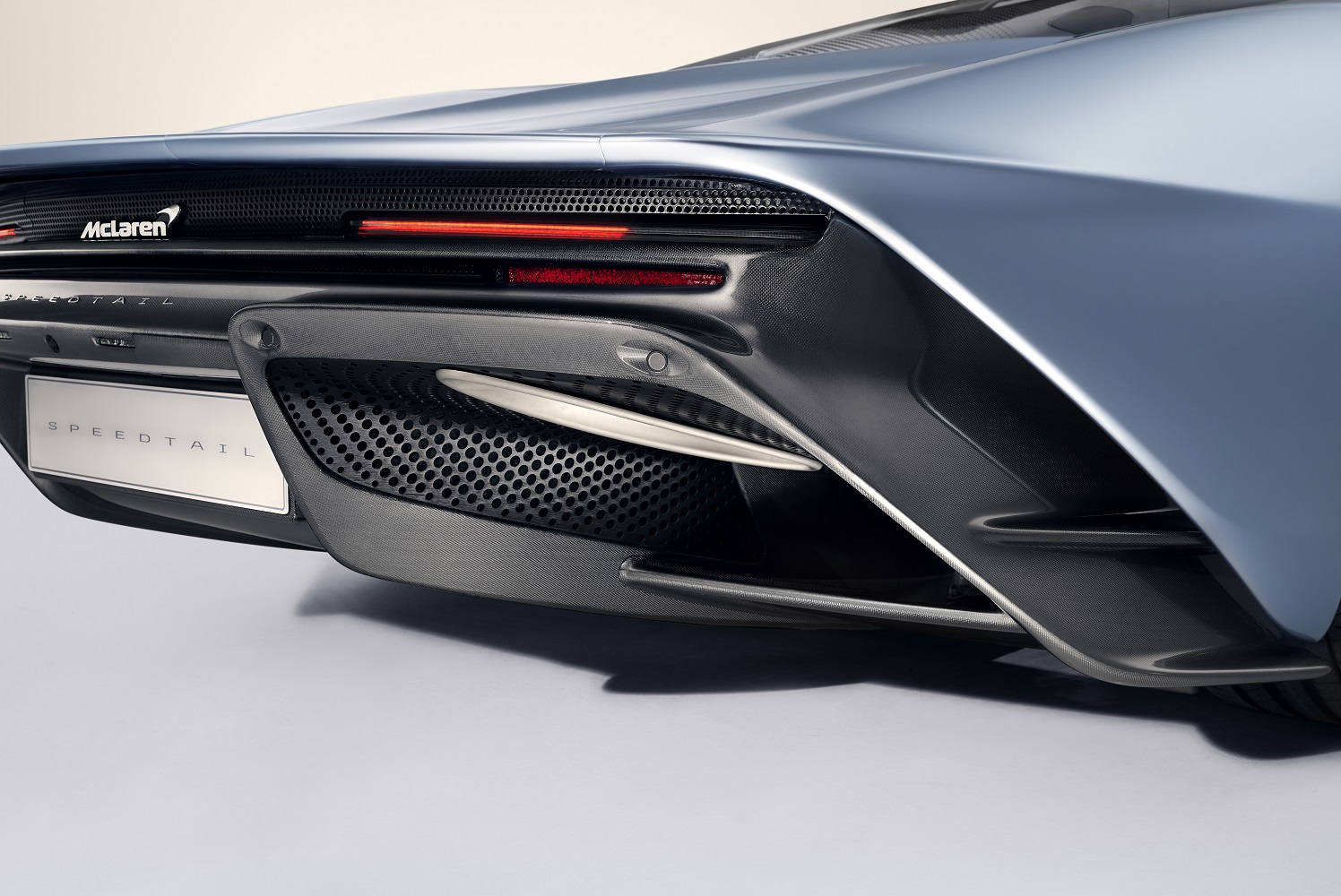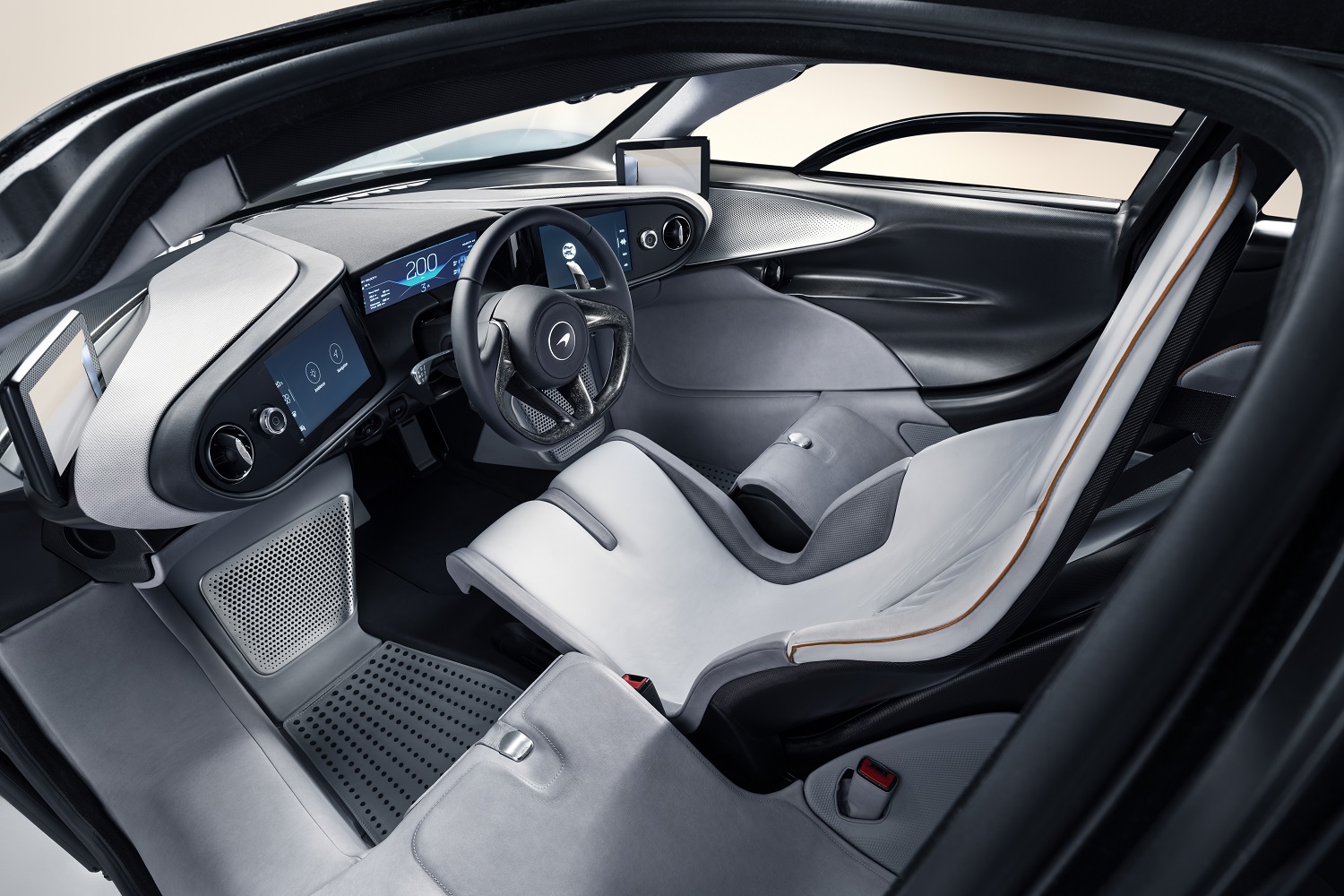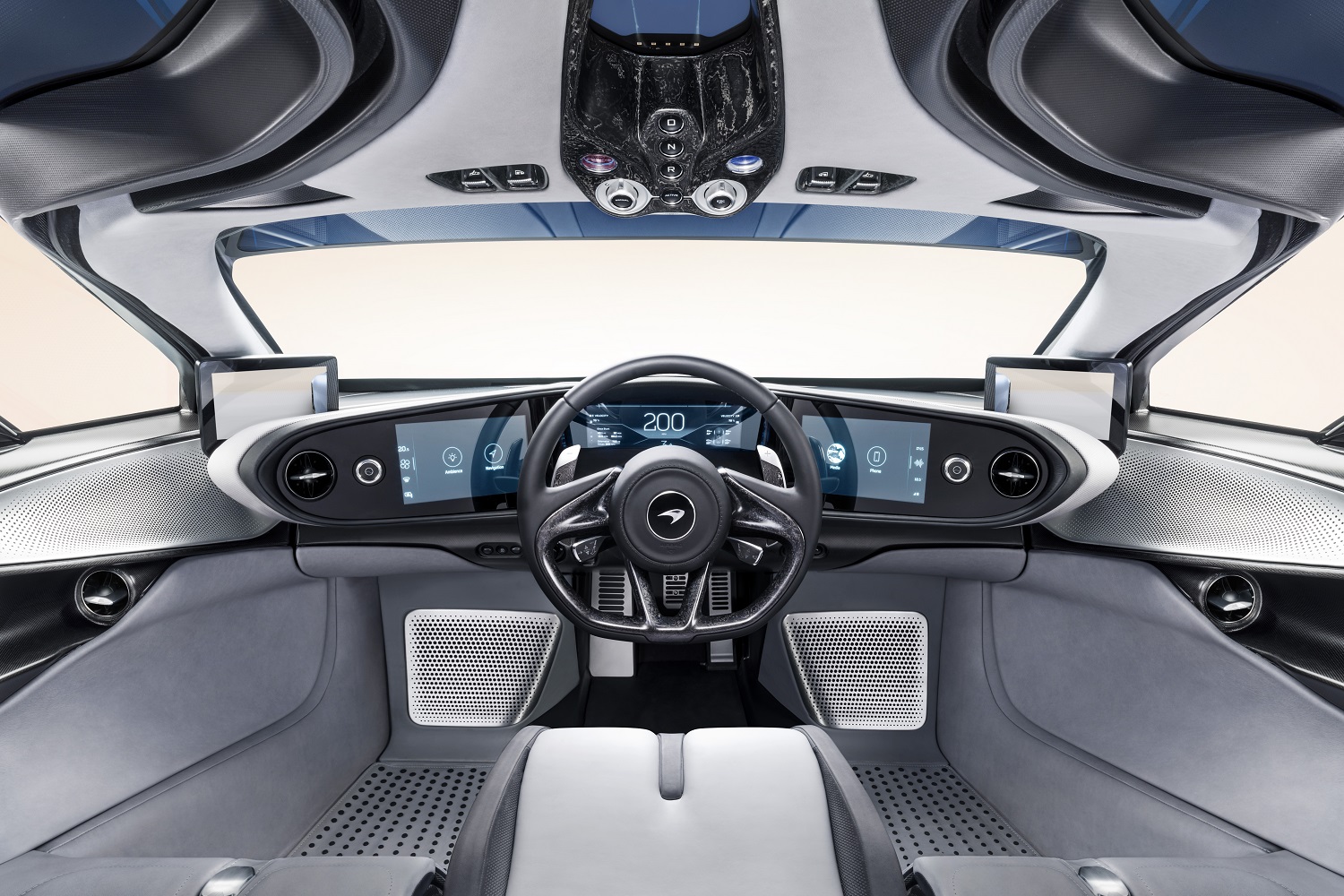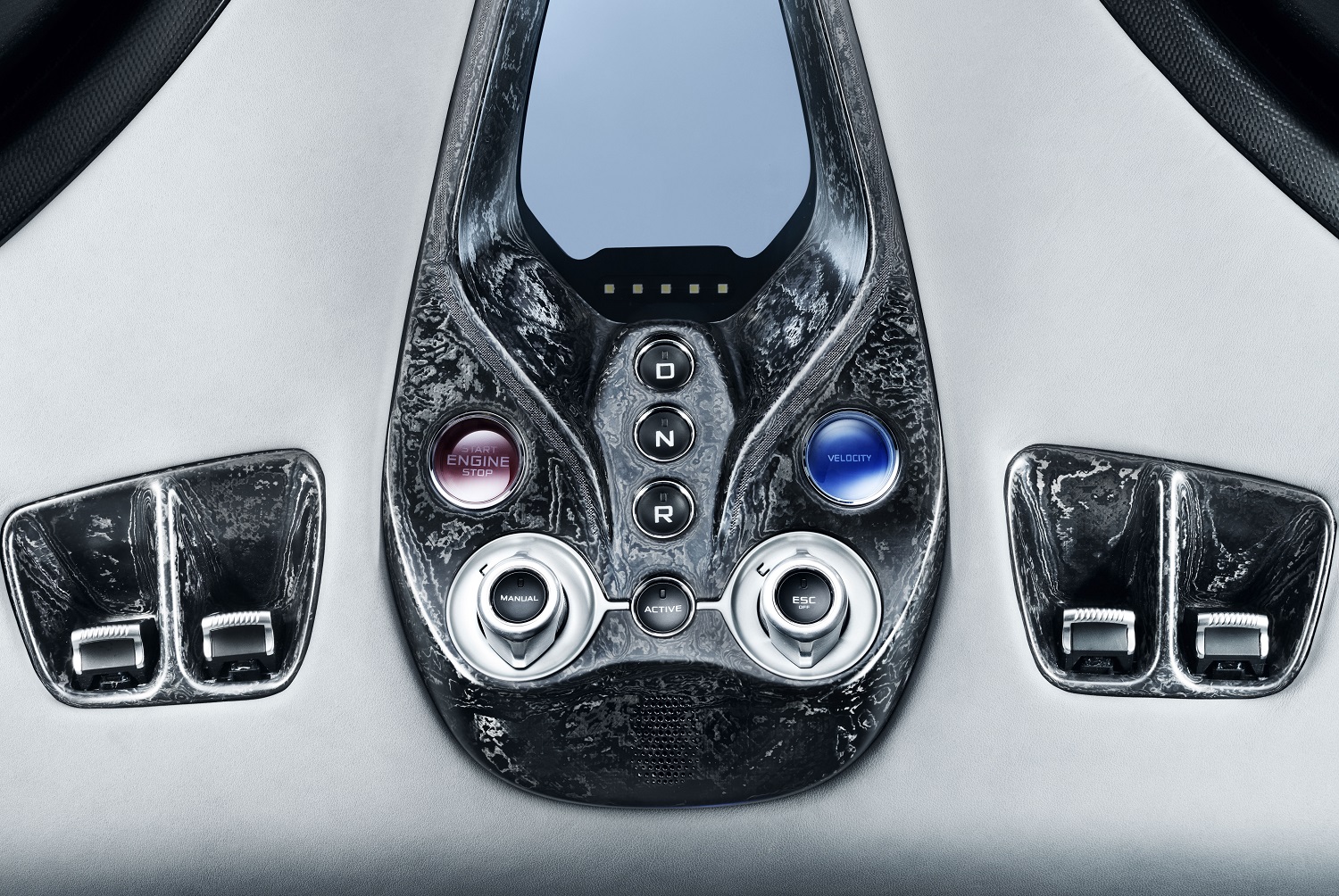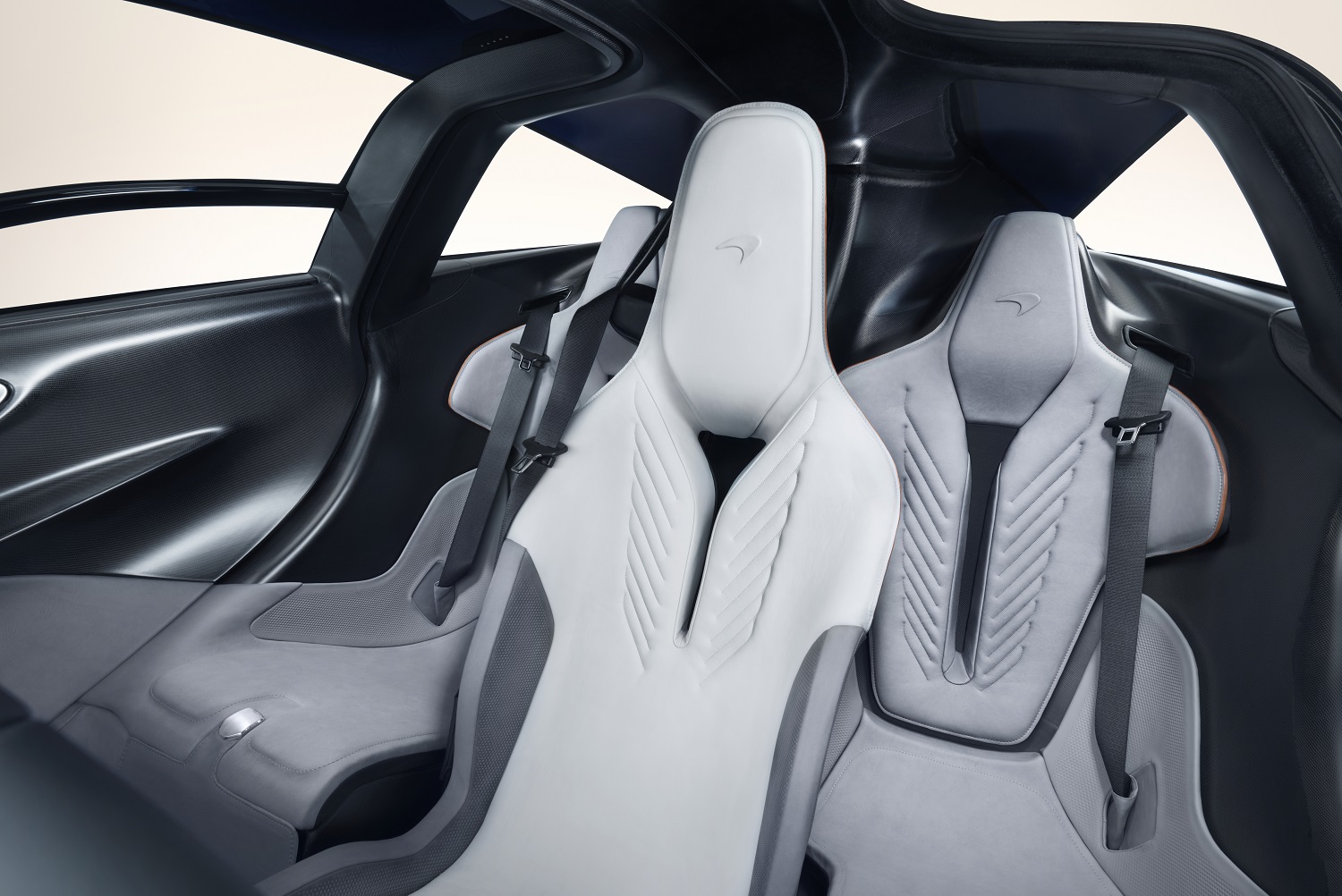From its carbon-fiber body to its gold-lined engine bay, the McLaren F1 had many distinctive features. But the most unusual was its three-seat cabin layout, which placed the driver in the middle for a racecar-like feel. McLaren looked to the F1 for inspiration as it developed a limited-edition hyper-GT named Speedtail.
The car is called BP23 internally, a name which stands for “bespoke project 2,” and also refers to the three-abreast seating arrangement. Like the sold-out P1, the Speedtail is powered by a gasoline-electric hybrid powertrain built around a V8 engine, although McLaren isn’t divulging additional technical details at this time. We know the system generates 1,035 horsepower, which is enough to send the Speedtail to a top speed of 250 mph. That figure that makes it the fastest McLaren road car ever. It’s capable of accelerating from zero to 186 mph in 12.8 seconds.
The curvaceous front-end design makes the teardrop-shaped, carbon fiber-bodied Speedtail immediately recognizable as a member of the McLaren family but the similarities with other models end there. The roof line peaks above the front passenger and slopes down until it flows into an impossibly low rear end. Pinning down this highly aerodynamic design was a key part of making the Speedtail capable of 250-mph runs. Designers also removed every exterior component that adds drag, which is why you don’t see a big wing out back or mirrors on the doors. They’ve been replaced by seriously cool power-retractable cameras that transfer footage to screens inside. The carbon fiber covers on the front wheels reduce air turbulence around the wheel arches.
The Speedtail isn’t a stripped-out track special, though; that’s what the Senna is for. Instead, McLaren promises the lucky few buyers that it will deliver its most opulent model to date, one that offers a blend of extreme performance and sporting luxury. It stands out with the same dihedral doors used on every other current McLaren, but they’re power-operated for the first time. The use of new materials provide buyers with a wider range of customization options than ever before, including badges made with 18-carat gold or platinum.
The three-abreast seating arrangement gave McLaren the freedom to design the interior around the driver. The central screen replaces the instrument cluster, while the two screens on either side of the steering wheel display portions of the infotainment system. The two outer screens show the driver what’s behind the car. This setup creates a clean, clutter-free, and perfectly symmetrical cockpit that’s a treat for the eyes. Since there’s no center console, McLaren moved the handful of switches and buttons that couldn’t be eliminated — including the ones used to select drive, neutral, or reverse — to clusters above the windshield. These buttons are milled from aluminum and hand-polished.
If you’re wondering where the sunvisors are, you’re not alone. McLaren points out they’re simply not needed. The top part of the windshield is made with electrochromic glass that darkens at the push of a button.
Speedtail production will be limited to just 106 units — matching the total production run of the F1 — and all of them have already been sold in spite of a price tag pegged in the vicinity of $2.2 million. Deliveries will begin in 2020.
There’s one major catch, according to Autoblog: the Speedtail isn’t street-legal in the United States. The roughly 30 examples earmarked for the American market will arrive under the Show and Display rule, which grants an exemption from safety and emissions regulations to models considered historically or technologically interesting. In exchange, they’re only allowed in to be, well, showed or displayed. They can’t be driven for more than 2,500 miles annually. High-mileage supercars are rare in any event, so the caveat shouldn’t discourage Speedtail owners from taking them out every once in a while.
Update: Added official information about the Speedtail.
